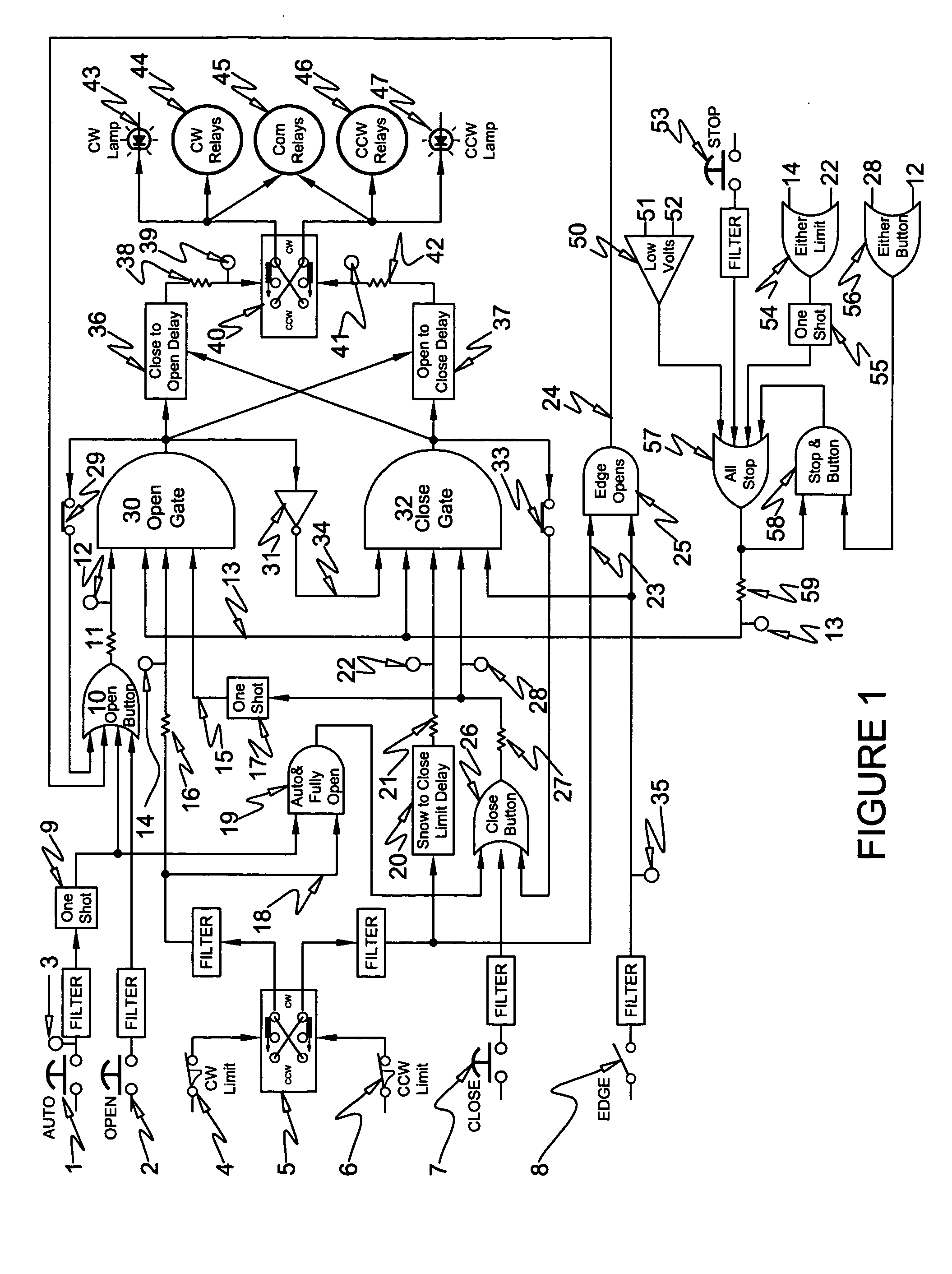Electronic industrial motor operator control system
a control system and industrial motor technology, applied in the direction of electric programme control, motor/generator/converter stopper, dynamo-electric converter control, etc., can solve the problems of wreaking all kinds of logic mayhem, microprocessor reliability disadvantages, and lack of prior art utilizing three button stations in any motor operator or industrial type of motor operator. to achieve the effect of improving reliability and improving accuracy
- Summary
- Abstract
- Description
- Claims
- Application Information
AI Technical Summary
Benefits of technology
Problems solved by technology
Method used
Image
Examples
Embodiment Construction
[0026] The Open-Button gate 10, of FIG. 1, reacts to Open-Pushbutton 2 or any other open signal (logical OR) by driving resistor 11 to input 12 of the Open-Gate 30. The output of Open-Gate 30 connects to slide switch 29, feeding back into the Open-Button gate 10 thereby latching both gates. Once latched, both gates remain latched even after releasing Open-Pushbutton 2. Removing any other input signal from Open-Gate 30, such as, stop signal 13, or limit switch signal 14, or the I-shot signal 15 will disable gate 30 and unlatch its output. Open-Gate 30 remains off and disabled until the return of all its input signals (logical AND). Disconnecting slide switch 29, removes the abovementioned feedback latching command such that constant pressing of Open-Pushbutton 2 is required to maintain an output signal from Open-Gate 30. A constant open command at 12 cannot produce an output signal from Open-Gate 30 unless signals 13, 14, and 15 are continuously present. In this manner, slide switch ...
PUM
 Login to View More
Login to View More Abstract
Description
Claims
Application Information
 Login to View More
Login to View More - R&D
- Intellectual Property
- Life Sciences
- Materials
- Tech Scout
- Unparalleled Data Quality
- Higher Quality Content
- 60% Fewer Hallucinations
Browse by: Latest US Patents, China's latest patents, Technical Efficacy Thesaurus, Application Domain, Technology Topic, Popular Technical Reports.
© 2025 PatSnap. All rights reserved.Legal|Privacy policy|Modern Slavery Act Transparency Statement|Sitemap|About US| Contact US: help@patsnap.com


